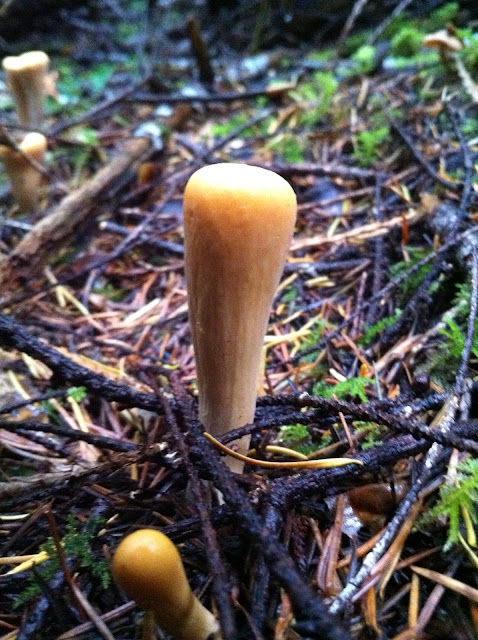What a pleasant day I had. I went out with a good attitude, a light heart, just curious and not expecting to find any edible mushrooms. My stick in hand, 10 degrees, warm gloves, and a warm jacket. I thought to seek a route through the forest between two of my well traveled paths so that I might have a nice loop for future walks.
The first fungi of interest was Helvella lacunosa (Fluted Black Elfin Saddle). These were truly tiny specimens that I didn't at first see.
I was in a spot where I had found Hedgehogs last winter and where I found Chanterells in early October this year. They had come up in late August or early September sometime following the brief rains at the end of the summer. By the time I found them they were too far gone. It is a place in the middle of a forested area but it gets very wet at certain times of the year. I guess the low ground, between two rocky knolls catches the run off.
A little higher up I found more Elfin Saddle's with the commonly occurring parasitic mold (Hypomyces cervinigenus) all over them.
Pablo in this video says they are good to eat:
http://youtu.be/jPSxLvHF3x0
He says he thinks they taste better than Morels. J. Duane Sept says that they may contain a small amount of a toxic substance, monomethylhydrazine, which is realsed if dried or parboiled for 3 to 5 minutes.
I wandered for quite a while and then found some Chanterells, a little waterlogged and near the end of their usefulness, and then found my first Lactarius rubrilateus, or Bleeding Milk Cap.
There were many "little white mushrooms" and the first choral fungas I have seen this season (Ramaria acrisiccescens, or Ramaria flavigelatinosa, or Ramaria formosa complex, perhaps?).
I found a nice patch of Laccaria amethysteo-occidentalis on a moss covered rocky shelf.
On the way home I found a delightful patch of Boletes with several specimens snuggled up to some, what I think were, Slimy Gomphidius (Gomphidius glutinosus).
Charming.




















































